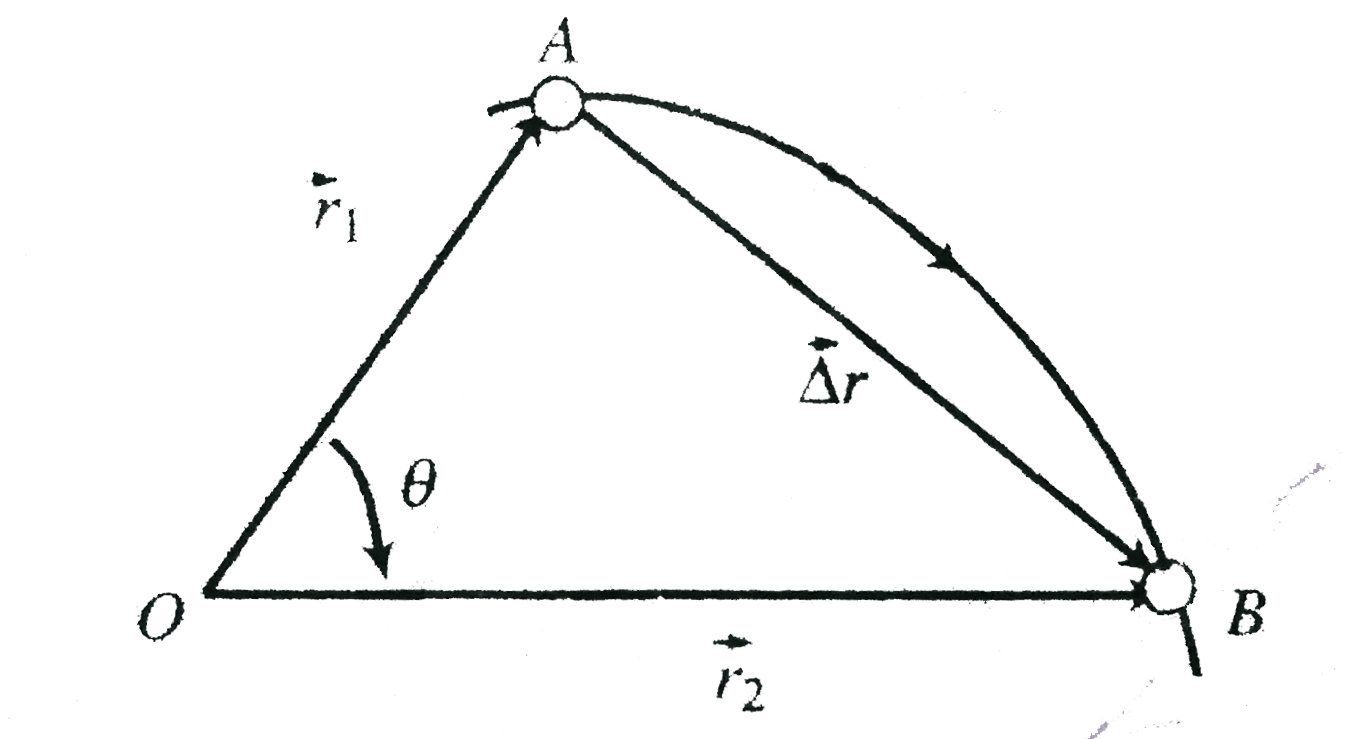Two particles A and B, move with constant velocities →v1 and →v2. At the initial moment their position vectors are →r1 and →r2 respectively. The condition for particle A and B for their collision is Solution in Marathi
→r1−→r2=→v1−→v2
→r1−→r2∣∣→r1−→r2∣∣=→v2−→v1∣∣→v2−→v1∣∣
→r1.→v1=→r2.→v2
→r1×→v1=→r2×→v2
The correct Answer is:B
Step by step video & image solution for Two particles A and B, move with constant velocities vec(v_(1))" and "vec(v_(2)). At the initial moment their position vectors are vec(r_(1))" and "vec(r_(2)) respectively. The condition for particle A and B for their collision is by Physics experts to help you in doubts & scoring excellent marks in Class 11 exams.
Updated on:21/07/2023Topper's Solved these Questions
- FORCE BOOK - TARGET PUBLICATIONCHAPTER - FORCE EXERCISE - Competitive Theinking (4.5 Inertial and non-inertial frames)
2 Videos
- FORCE BOOK - TARGET PUBLICATIONCHAPTER - FORCE EXERCISE - Competitive Theinking (4.6 Moment of force)
3 Videos
- FORCE BOOK - TARGET PUBLICATIONCHAPTER - FORCE EXERCISE - Competitive Theinking (4.3 Law of conservation of momentum)
23 Videos
- ELECTROSTATICSBOOK - TARGET PUBLICATIONCHAPTER - ELECTROSTATICSEXERCISE - EXCERCISE
156 Videos
- FRICTION IS SOLIDS AND LIQUIDS BOOK - TARGET PUBLICATIONCHAPTER - FRICTION IS SOLIDS AND LIQUIDS EXERCISE - MCQ (EVALUATION TEST)
21 Videos
Similar Questions
A reference frame attached to the earth
View SolutionIf →F is the force acting in a particle having position vector →r and →τ be the torque of this force about the origin, then
View SolutionAn explosion blows a rock into three parts. Two parts go off at right angles to each other . These two are 1kg first part moving with a velocity of 12ms−1and2kg second part moving with a velocity of 8ms−1. If the third part flies off with a velocity of 4ms−1. Its mass would be
View SolutionElectrostatic means study of
View SolutionA body while sliding went straight down an incline of 45∘ to the horizontal and was subjected to a coefficient of kinetic friction of 0.20. Starting from rest, hwo long did it take him to reach a speed of 50km/hr? (Ignore air resistance and take h=10m/s2)
View SolutionLet →a,→b,and→c be non-zero vectors and →V1=→a×(→b×→c)and→V2(→a×→b)×→⋅ Vectors →V1and→V2 are equal. Then →aan→b are orthogonal b. →aand→c are collinear c. →band→c are orthogonal d. →b=λ(→a×→c)whenλ is a scalar
View SolutionFind 3-dimensional vectors →v1,→v2,→v3 satisfying →v1⋅→v1=4,→v1⋅→v2=−2,→v1⋅→v3=6,→v2⋅→v2=2,→v2⋅→v3=−5,→v3⋅→v3=29
View SolutionA particle moves from position A to position B in a path as shown in If the poit vectors →r1 and →r2 making an angle θ between them are give, find the magnitude of displacement.
 .
.
View SolutionThe resultant of →A+→Bis→R1. On reversing the vector →B, the resultant becomes →R2. What is the value of R21+R22?
View SolutionTwo particles moving initially in the same direction undergo a one- dimensional , elastic collision . Their relative velocities before and after the collision are vec(v_(1)) and vec(v_(2)) . Which of the following is not correct?
View SolutionTwo particles A and B, move with constant velocities →v1 and →v2. At the initial moment their position vectors are →r1 and →r2 respectively. The condition for particle A and B for their collision is
View Solutionदो कण A तथा B नियत वेग क्रमशः →v1 तथा →v2 से गति कर रहे हैं। प्रारम्भिक क्षण में उनके स्थिति सदिश क्रमशः →r1 तथा →r2 है, तो A तथा B के संघट्ट के लिए शर्त है कि :
View SolutionA particle has its position moved from vec(r_(1))=3hati+4hatj to vec(r_(2))=hati+2hatj . Calculate the displacment vector (Delta vecr) and draw the vec(r_(1)), vec(r_(2)) and Delta vecr vector in a two dimensional Cartesian coordinate system.
View Solutionदो कण जिनके स्थिति सदिश →r1=(3ˆi+5ˆj)m तथा→r2=(−5ˆi−3ˆj)m है क्रमशः →V1=(aˆi+4ˆj)m/s तथा →V2=(4ˆi)m/s चाल से गतिमान है। यदि ये 2 सेकंड पश्चात टकराते हो , तो a का मान है
View Solutionदो कण A तथा B नियत वेग क्रमशः →v1 तथा →V2 से गति कर रहे हैं। प्रारंभिक क्षण में उनके स्थिति सदिश क्रमशः →r2 तथा →r2, हैं तो, A तथा B में संघट्ट होने के लिये प्रतिबंध है कि :-
View Solution
